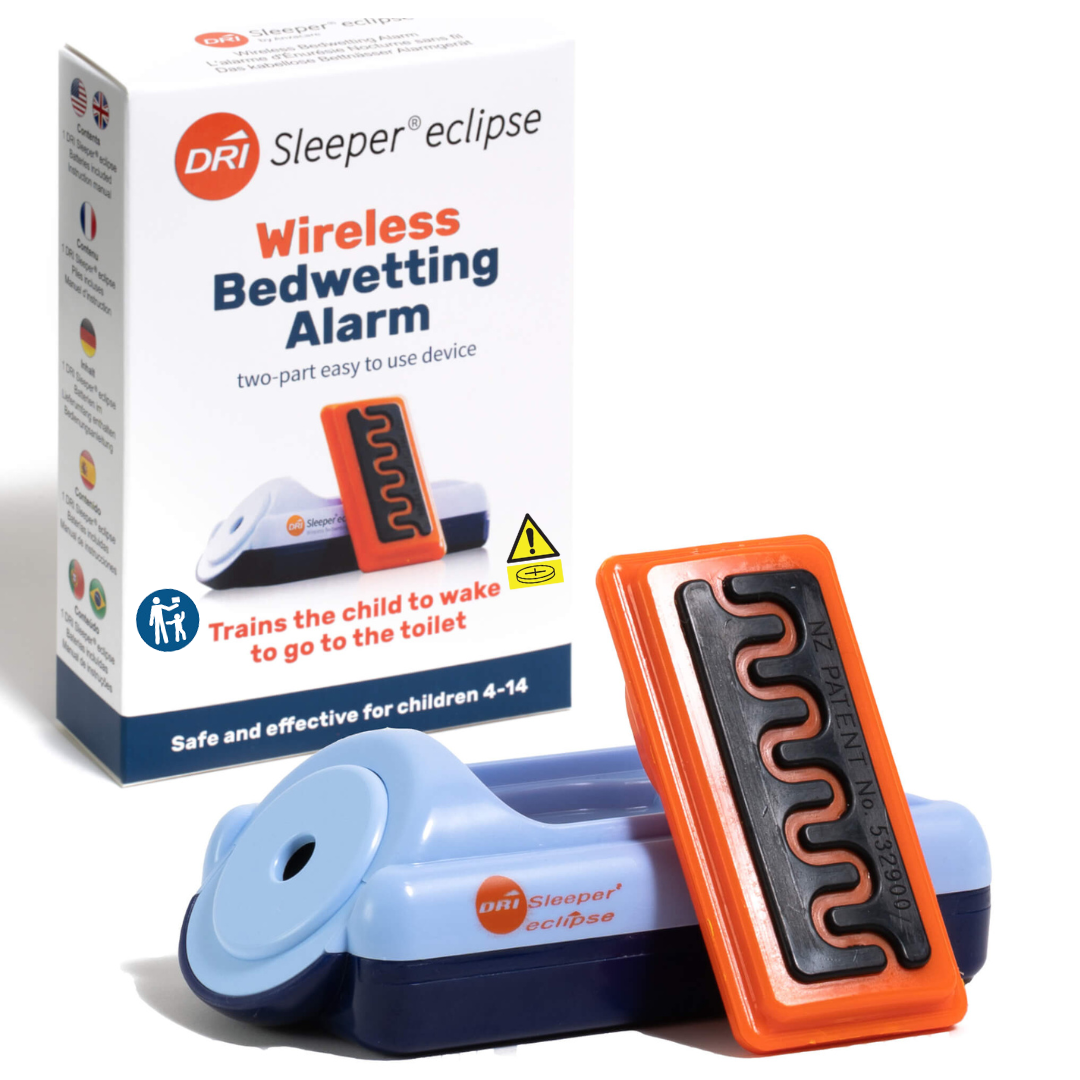Tips to beating bedwetting
Tips to beating bedwetting
Most children achieve night-time bladder control before they go to school. But if your child still wets the bed at least twice a week by the time they reach five years of age, they may require additional support to overcome the issue.
Approximately 15 percent of bedwetters grow out of it naturally each year. But for those who don’t or haven’t yet, bedwetting can be an embarrassing and isolating experience. In some cases, it may lead to ongoing problems with self-esteem, confidence and bullying. For these reasons, finding a solution for bedwetting can have an extremely positive impact on a child’s life.
Bedwetting alarms (or enuresis alarms) are proven to have the highest long-term success rates, according to international studies, when compared to other treatments.
In fact, Professor Hjalmas of Sweden, a leading paediatric medical expert, claims that using a bedwetting alarm “is the only method proven to have cured the problem”.
How do bedwetting alarms work?
Bedwetting alarms work on the principle of behavioural conditioning, where the brain is trained to respond to messages from the bladder and prevent bedwetting during sleep. The sensation of a full bladder should trigger the child to wake up, but in the case of bedwetters, it doesn’t. Bedwetting alarms are designed to awaken the child with a moisture-sensitive alarm, thus allowing the child to go to the toilet and finish urinating. The solution is to create a mental link between the feeling of a full bladder and being woken, so that gradually the child learns to ‘beat the buzzer’, wake up, and go to the bathroom without the assistance of the alarm.
How do DRI Sleeper® alarms work?
DRI Sleeper® bedwetting alarms essentially consist of two components: an alarm unit and a Urosensor™. This sensor is placed in the underwear (ideally in a pocket cut into a women's small or regular sanitary pad) to trigger the alarm as soon as urine is released. Some people are confused as to how the alarm can be effective when it wakes the child after they have become wet. But remember — successful treatment is about behavioural conditioning. DRI Sleeper® pairs a powerful stimulus (the buzzing alarm) with a neutral stimulus (the sensation of a full bladder), so that the brain learns to pay greater attention to the neutral stimulus. In other words, even though the alarm triggers after bedwetting has occurred, the brain is beginning to associate being woken up by the alarm with an awareness of what is happening in the bladder. Over the next few weeks of night toilet-training, your child will learn to react more quickly to the alarm, and soon will wake before they start to pass urine. This means the child is responding not to the buzzer, but to the sensation of the bladder filling — and that is precisely the DRI Sleeper® goal. Keep using the DRI Sleeper® alarm every night until the child achieves 14 consecutive nights without triggering the alarm. They can then stop using the alarm.
How long does treatment take?
The training time with a DRI Sleeper® alarm can be subject to variability, but may typically take 2 to 12 weeks. Some children will respond very quickly and finish night toilet-training within a week. In a small number of cases, the training time may take longer and require additional support. Remember that purchase of an alarm from us will come with professional ongoing guidance through the training period. You’re not just buying a product, but a complete bedwetting solution. Contact us at any time for expert advice and dedicated Australasian support.
Quick tips:
Bedwetting is not your child’s fault.
In most cases, bedwetting comes with a genetic link. Your child is not misbehaving or being lazy. When there are no medical or physiological causes bedwetting can be stopped, — make sure your child understands that there is a solution, and encourage them to work with you to achieve it.
Scheduled alarms will not work.
Some parents attempt to solve bedwetting by setting an alarm or waking the child at a regular time each night to empty their bladder. Unfortunately, this will not provide a long-term solution, as the brain will be unable to form a link between waking and the need to urinate, if the child does not have a full bladder at the time.
There is no need to limit drinks.
It is unlikely that your child’s bedwetting issues are being worsened by over-drinking. Adults and most children produce a hormone that minimises urine production while sleeping. Some bedwetters do not produce enough of this hormone and limiting drinks will not change this.
DRI Sleeper® alarms will work for restless sleepers.
Restless or fidgety sleepers may accidentally dislodge or unplug a clipped-on alarm unit. Thankfully, the DRI Sleeper® Eclipse alarm comes with a wireless alarm unit that is placed on a bedside table or other furniture in the room. When the alarm sounds, the child must wake up completely and get up to turn their alarm off.
DRI Sleeper® alarms will work for deep sleepers.
The DRI Sleeper® Excel alarm comes with an alarm unit that clips to the shoulder of pyjamas. Its loudness, frequency and positioning are maximally alerting for heavy sleepers and will effectively awaken most children. In rare cases that the DRI Sleeper® does not wake your child, you may have to undertake an additional step in treatment. When you hear the alarm, go into the room, turn on the light and wake the child — leave the alarm beeping. This will teach the child to form a connection between the sound of the alarm and waking up so that they learn to do so unaided. The night toilet-training strategy can then continue as normal.
Browse our FAQs for more information, or get in touch with our experienced team
